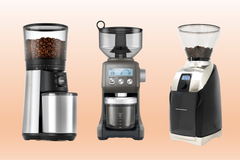Table of Contents
So, you want to visit a coffee plantation or farm?
We think this is a great idea, and something that every coffee lover should have the opportunity to do at least once in their lifetime. For many of us, we brew our coffee and savor it, but don’t give much through to where it’s come from.

Every bean, every blend has a story. The sip of coffee that slips past your lips traveled and underwent a transformative process to get to you. Once you visit a plantation or farm, you will never experience coffee the same way again, and trust us, this is good thing.
But, while plantation tours are on a list of fast growing destinations, they still fall outside the realm of a typical vacations, and with that, you probably have questions about what to do, or what to expect.
We are here to help you with that.
Here are 6 tips that we think you should keep in mind when planning your visit to one of the world’s coffee plantations.
1. Pick a Destination

Ok, this seems like a no brainer. After all, you need a destination before you can take off, but your options are probably more plentiful than you think.
Coffee is grown in more than 50 countries around the world. Choosing which one to make as your destination point will depend on several factors. The first of which is how “rustic” you want your vacation to be.
Larger coffee producers, such as Ethiopia, Brazil, Columbia and Hawaii have learned that coffee tourism has the potential to be nearly as lucrative as coffee itself. Plantations and farms are plentiful in these regions, they are well traveled and booking a tour is as simple as contacting a travel agent or connecting with a local touring company yourself.
On the other hand, there are countries with smaller coffee production, who might not experience the higher level or tourism and because of that have invested less in a resort like tour experience. These destinations, such as Indonesia or Rwanda, might be more difficult to secure, but will also offer a completely different experience.
2. Safety
One thing to keep in mind when picking a destination is safety. As unfortunate as it is, there are parts of the world that simply aren’t as safe for leisurely travel, and coffee is grown in many of them. Seek the advice of a well-informed travel agent before committing to a coffee growing region that might not be the safest option for you.
Remember, the goal is to immerse yourself in coffee culture, and fully enjoy the experience. It’s best to avoid coffee growing regions where this might not be possible.
3. Know the Differences Between a Plantation and a Farm
Would you like to tour a coffee plantation or a coffee farm?
Do you know the difference?
Quite a few people do not realize that there is a difference between the two, and this isn’t really surprising considering that the terms are often used interchangeably. But, alas, there is a difference and you should know what it is before venturing out on a tour.
Basically, the difference between plantations and farms boils down to two factors:
- size
- ownership
Plantations are generally larger, and owned by someone other than the farmer. Large coffee plantations can be found in major growing regions, such as Brazil.
Farms on the other hand are smaller, operated by the farmers themselves. When you hear about fair trade and ethical sourcing practices, farms and their farmers are the typically who is being protected.
Both farms and plantations offer tours, it is simply a matter of finding the one you want to visit in your destination spot. The experience, while having much in common with each other, will have some differences.
Farm tours are more likely to be smaller groups, or possibly even given on an individual basis. There is also sometimes more walking involved. But, in exchange for a little extra physical effort, you often get the chance to intermingle with the farm workers and even gain hands on experience.
Plantation offer larger, scheduled tours, although there are exceptions to this. Plantations often have more room and resources, so you might also find that tours include extras like a video showing of the history of coffee or a specially designated tasting room with a menu.
When you book your tour, you are going to want to know what you are in for. Make sure to ask for details, and call around, ask questions and compare until you find the destination that you know will provide the most enjoyable, enriching experience.
4. Plan to Get REALLY Hands On
The coffee harvest seasons begins in late August and carries on through until early spring. This is a great time to visit a coffee plantation or farm. Because it is harvest season you will get to see more of the action, and in some cases, even participate.
Some farms and plantations will allow you to get your hands dirty and experience the life of a coffee worker, by participating in picking some of the berries.
On that note, of course this type of physical activity will be optional, but you should be aware that some tours, especially on smaller farms, can be physically challenging for some people. If you have any limitations, call ahead and ask if how long/far you should plan on walking, how difficult is the terrain and is their tour accessible for people with wheelchairs or other assisted mobility devices.
Keep in mind that while people with disabilities are protected in the United States, that isn’t necessarily the case in other parts of the world. Most reputable tours will make reasonable attempts to accommodate, but it is best to call ahead just to make sure.

5. Expect to Learn About more than Just coffee
So, the goal is to learn everything you can about life on a farm or plantation, right?
Yes, but don’t expect the knowledge you gain from a tour to be so limited.
Plantations and farm tours are also an opportunity to learn about local culture and history. Many tours include additional educational elements to enrich your experience. Plus, on smaller farms, it is not at all unusual to find yourself engaging one on one with the workers and farmers themselves.
This is your chance to not only learn more about coffee, but of the culture it has created.
6. Grow from the Experience
Finally, think about what you want to gain from the experience, and then expect it to be so much more.
When you decide to step out of the comfort of what you know and immerse yourself in another culture, it is always going to be growth experience. You undergo a transformation, much like the coffee in your cup.
When you want to experience great coffee that is ethically sourced from the best coffee fields in the world, we have what you are looking for. Sign up today for a Nomad Coffee Subscription and bring the world of coffee to your door.






